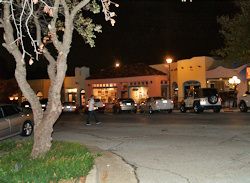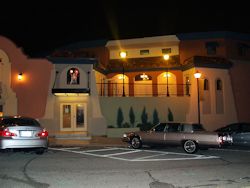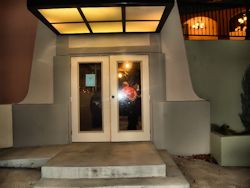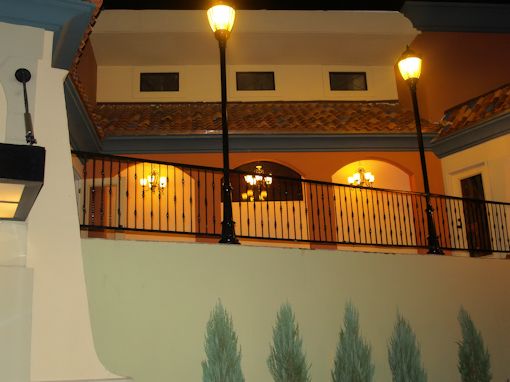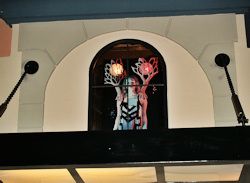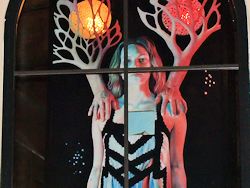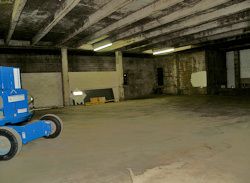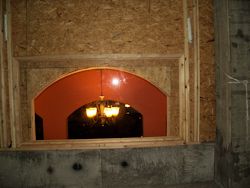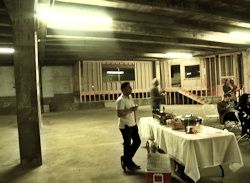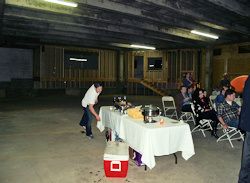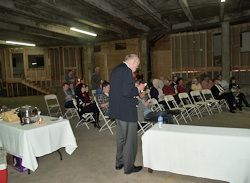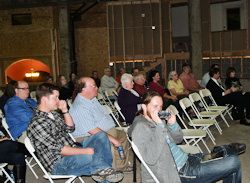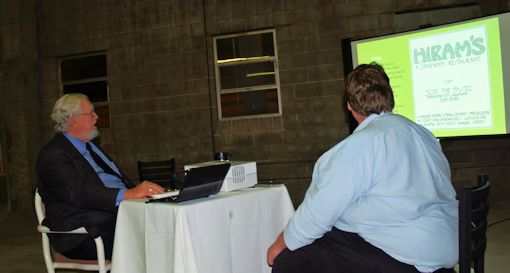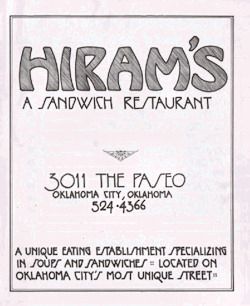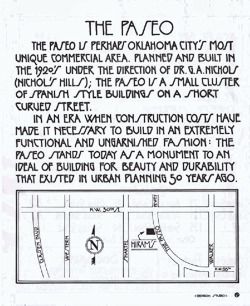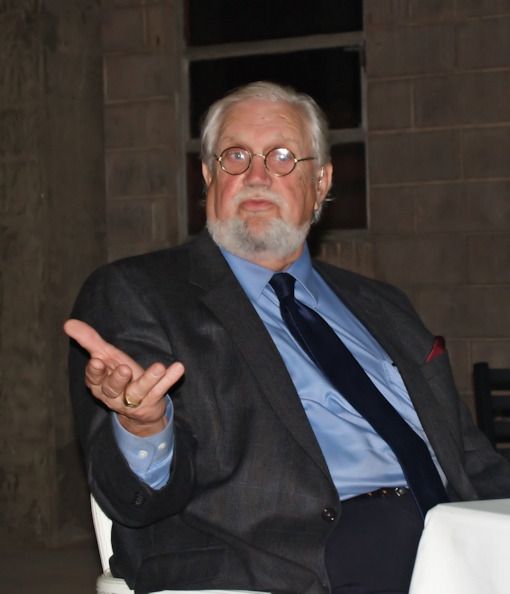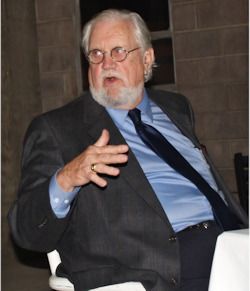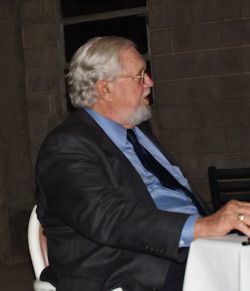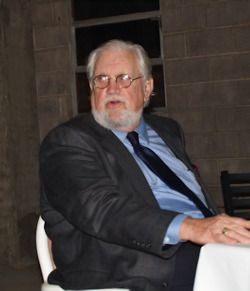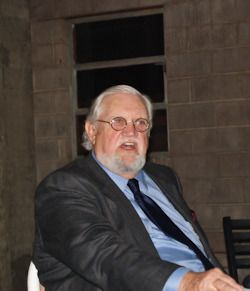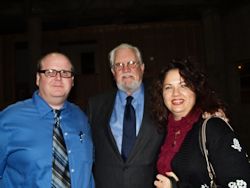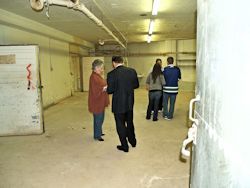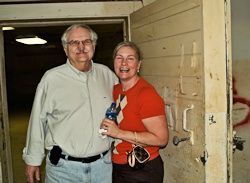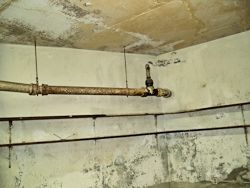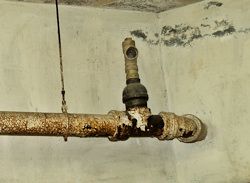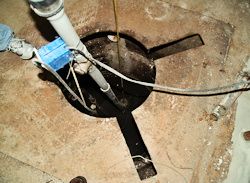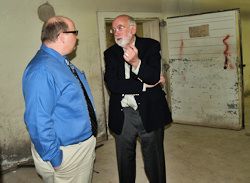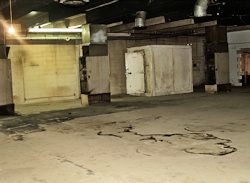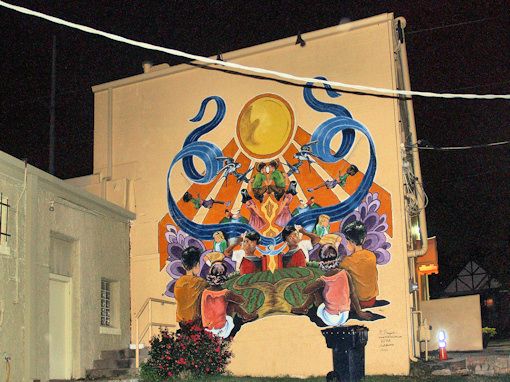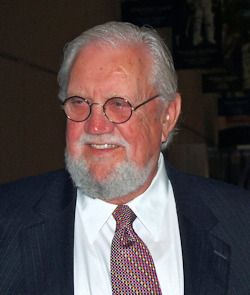 It came as a shock to me to read in Steve Lackmeyer's Oklahoman article that John Lampton Belt died Sunday morning, at the age of 76. Steve's article was published on-line on the same day, March 10, and it appeared in the print version of the Oklahoman on March 11.
It came as a shock to me to read in Steve Lackmeyer's Oklahoman article that John Lampton Belt died Sunday morning, at the age of 76. Steve's article was published on-line on the same day, March 10, and it appeared in the print version of the Oklahoman on March 11.
Why is John Belt significant to Oklahoma City history? The answer is simple. John Belt is/was a person who found his comfortable place in preserving and enhancing a historic neighborhood in Oklahoma City, and he singularly established the Paseo District into what it has become today.
Steve Lackmeyer's Articles. After Steve's initial article on March 10-11, he wrote another for the March 12 Oklahoman, and both will tell you things about John Belt and his many contributions to our city, and no need exists for complete repetition here, except to note some snippets:
| Belt may be best known for his efforts over three decades to revive Spanish Village, a faded commercial corridor, into Paseo, an arts district that is home to 20 galleries and working studios. The district, located between NW 28, NW 30, Walker and Dewey Avenues, also is home to gift and clothing shops, an event center, live theater, restaurants and bars.
Belt’s efforts to revive Paseo started in 1976 when he was dismayed to learn a favorite sandwich shop where he often ate lunch was about to be closed by a neighbor who planned to buy the building and use it for storage. In a quick cash upfront deal, Belt did the deal instead, and the restaurant stayed put. More deals followed. As Belt renovated one building after another in the former Spanish Village, artists opened up galleries and the neighborhood enjoyed a slow but steady rise from blight. In 2010 the Paseo was named one of the Top Ten Greatest Neighborhoods in America by the American Planning Association, one of America’s Top Revitalized Neighborhoods by Forbes Magazine and in 2011, the BBC listed Paseo as one of the Most Beautiful Neighborhoods in the United States. |
The above snippets are from Steve's first article. In the second, discussing the property which will be shortly shown below, he said,
| At one of our many visits at the restaurant now known as Picasso's, I stared across the street at the forlorn former home of the Spaghetti Factory. The building was a stark white blank canvass in the middle of an otherwise colorful mix of pastels and tile roofs. The building also was the largest on Paseo Drive, and a reminder of what the rest of the strip looked like before Belt's first building purchase in 1976.
The owners were known to be tough negotiators when it came to striking a deal. This would not be a cheap buy for anyone — especially someone like Belt, whose heart was worn on his sleeve. A couple months later, Belt called me back. Life is short, he explained, and he decided it was indeed time to get the building (once the Paseo Plunge) and bring it back to life after 20 years of dormancy. Belt then moved quickly to turn the nondescript building into his next artistic masterpiece. I was amused as he had to submit the building designs to the Downtown Design Review Committee, which had been set up just a few years earlier. How, I wondered, could this group really tell Belt what was and wasn't an appropriate fit for the area when he was the master planner of it all for more than 30 years? Belt never used that card on the committee members — he respectfully but firmly haggled with the group over their proposed changes. And the project went forward, even without a firm plan on the building's ultimate use. The building wasn't an easy renovation project. It was huge, without a lot of windows, and built so solidly it would likely withstand a 7.0 earthquake. We talked about this dilemma a few times. He pondered setting up musical practice studios in the virtually soundproof basement. He considered a balcony coffee shop or restaurant. An arts center, retail complex or community gathering spot all were on the list. As noted by his friends, John Belt almost always wore a suit and tie amid the more casually dressed “funky” folks who populate the Paseo. Yes, he was an attorney tied to pretty powerful interests in this town. But at heart, he was still the song-and-dance man who thrilled audiences in college, community theater, and briefly, in New York City. He was an artist at heart. And the Paseo, with all its colorful buildings, artists, attractions and events, is the masterpiece that John Belt, the artist, has given Oklahoma City to enjoy for generations to come. |
In addition to Steve's articles published in the Oklahoman, in one of his OkcCentral blog posts, he presents a very fine 10 minute video published by OPUBCO, much of it featuring Mr. Belt's overview of the Spanish Village and its transition into the Paseo Distict, complete with the 1960s-early 1970s hippies period and its transformation after that to the modern Paseo District. I've shamelessly embedded that video here, below.
With respect to Mr. Belt, the Paseo Plunge was not the only place for the general public to swim in the 1950s-1960s. For example, Springlake Amusement Park had a fantastic swimming pool area and I think there were a few others as well. But, he can be forgiven for that minor error.
My Personal Privilege. Lots and lots of people have known John Belt far longer than I have but I regard it as a high privilege that I came to know him when I did. My first contact with him occurred by phone when at the JRB At The Elms art gallery back in 2006 or 2007 when I was doing research on the history of the Paseo area, originally called "Spanish Village," the construction of which began in 1929 by G.A. Nichols. While at the gallery with my wife, I spoke with John's wife, Joy Reed Belt, and I inquired about the basis for the Paseo's claim to be "the first commercial shopping district north of downtown Oklahoma City," as was stated in one of the Paseo's websites. She assured me that it was (notwithstanding my observation that Plaza Court at 1100 Classen Drive, built in 1927, was Oklahoma City's first suburban shopping center) and she suggested that I might want to speak with her husband. I said that would be great, she got him on the phone, and we spoke with each other for the first time.
Truth is, I don't remember much about that conversation ... I just remember that it happened. My first blog post about the Paseo occurred shortly thereafter, in early May 2007. It was followed by my second post later in the month about the 2007 Paseo Arts Festival.
Some time passing, in the pre-organization days of RetroMetro OKC, probably in 2009, Mr. Belt was the guest speaker at a brown-bag lunch at the Oklahoma City downtown library, and his presentation was fascinating. I was pleased that he recognized me and gave me kudos for my Paseo research. Enter ego bump number 1 for Doug Dawg.
More time passed. Sometime in 2011, October I think, John contacted me and wondered if I might do some updating on my prior Paseo posts and I said that I would if he would help, and he quickly volunteered. We had lunch at Picasso's and then he gave me a private tour of the former Paseo Plunge property that he had purchased; later, we had another meeting at his law office at NW 50th & Western ... the latter being perhaps more like an Oklahoma City museum than a law office. A very nice friendship was formed during this time and (unless my memory has totally failed me) I understand from my wife that John's wife said to her that John had referred to me as his "new best friend," which, of course, pumped up Doug Dawgz ego several more notches, whether deserved or not. I mean and let's get real, John Belt was a person who was making Oklahoma City history ... I was merely an observer who was writing about it.
Then, on November 7, 2011, John hosted a meeting of RetroMetro OKC and made a splendid presentation at the formerly decrepit property that he had purchased and was completely reinventing at great personal expense, the old Paseo Plunge, and I took a number of photos of John and the re-purposed property. My original intention was to publish these photos more than a year ago, but I never did. It is fitting that I finally share those photos with you now as a tribute to John Lampton Belt, even if tardily done.
The Paseo Plunge. I've given some description of this property and its history in a May 2007 article. It is and was located at 3010 Paseo. First, I posted a few pics of what it looked like in early May 2007, one of which is shown below:
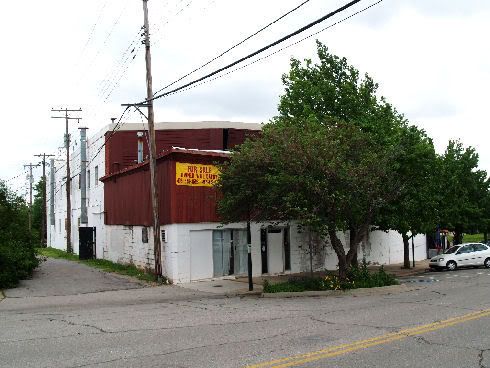
In a nutshell, the Spanish Village Bathing Pool opened in 1933 and was not originally within a closed building, and by 1934 it was named the "Spanish Village Plunge." By May 1944, it was renamed the Paseo Plunge. The pool closed by the early 1950s apparently in response to the 1949-1952 or so polio scare which resulted in the closing of swimming pools around the country. In the video above, Mr. Belt said that the polio scare was in 1957, but I think that he was mistaken about that. In any event, in July 1954, the revamped property reopened and became the Jamboree Surf Club, a private member club operated by Mike Samara. By that time the pool was surrounded on all sides by high walls to assure privacy but was still open-air at the top. A July 11, 1954, Oklahoman article said, "On the first floor of the main building are lockers and dressing rooms. On the second floor, on the same level as the sun deck, is a snack bar and lounge." A May 22, 1955, Oklahoman article said, "The Jamboree Surf club, rebuilt and enlarged from the old Spanish Village plunge, is one of the finest of its kind in the southwest. The concrete apron surrounding the large pool is divided into sunlit and shaded area. A spacious, elevated sun deck borders the pool on two sides." In May 1956, ads appeared in the Oklahoman again naming the pool the Paseo Plunge, open to the public, and those ads continued into 1960. The terminal date of the Paseo Plunge as a swimming pool has thus far eluded me.
By summer 1968, Sussy's Snack and Pizza Bar had opened at 3010 Paseo, and I am guessing that to be the time that the pool and property became totally enclosed, as well as re-purposed. A September 12, 1968, Oklahoman ad announced that "Sussy's Frozen Spaghetti with sauce" was available at that location.
In December 1977, the Spaghetti Factory grand opening occurred at the same location. At the time, one could have "dinner & disco" – spaghetti, pizza, and disco by the Wolfman." The Spaghetti Factory continued through 1989. A July 27, 1979, Oklahoman article described it: "Nestled in Oklahoma City's Paseo district, the Spaghetti Factory's long white exterior camouflages an inside decor which can best described as 'early nondescript.' ¶ A diner who walks through the front door is suddenly confronted with odd electronic devices on the wall, and what they are is anyone's guess."
By the time that I took the photo shown above in May 2009, the property had been unused for many years (Steve's 2nd article says for 20 years) and was on the market for sale. It was an eyesore and a huge blemish on the Paseo District that Belt had been earnestly developing for several years.
In that May 2009 article, I said,
At the moment, this former "pool" property has got to be one large negative to The Paseo today. It is large, it is empty, it is in disrepair, and it will take significant investment to change all of that.The significant investment came from none other than John Lampton Belt who purchased the property under the name of Paseo Village on December 11, 2009. Lackmeyer's 2nd article gives some description of Belt's intention for the property.
The New Paseo Plunge. By November 7, 2011, the Paseo Plunge had a new look:
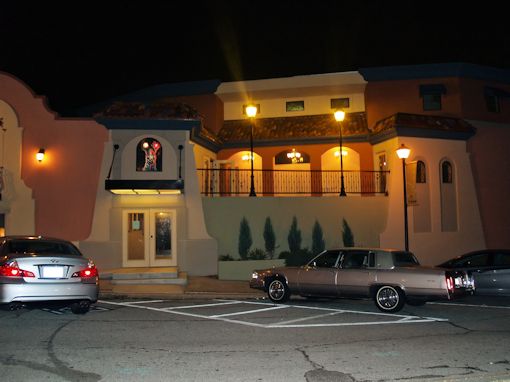
Mr. Belt invited RetroMetro OKC to meet at the work-in-progress of the Paseo Plunge on November 7 and have a gander at what occurred thus far and to see and hear him make a presentation of The Paseo's history. His investment and vision for this once decrepit property were staggering. More images from that meeting are shown below.
I've not returned to the Plunge since the November 2011 meeting so I cannot report on changes since that time. A graphic rendering appears at http://www.paseoplunge.com/, shown below, the text simply reading, "The Paseo Plunge is currently under renovation in the beautiful and renowned Paseo Arts District in Oklahoma City, Oklahoma."

Hopefully, John Belt's survivors will do what they can to see that his vision for this property continues and that it becomes a reality and a fitting testament to his dreams and vision.
Oklahoma City will forever be in your debt, John Lampton Belt, for all that you dreamed and did. I'm not particularly a religious person, but, still, I say, "Thank you, John Belt, and may God bless you and look fondly upon your soul," just as we do here amongst the living.



